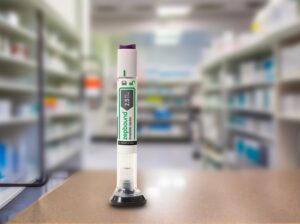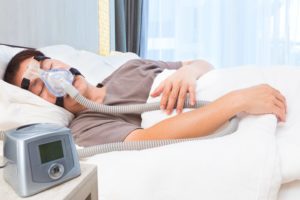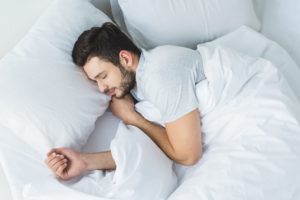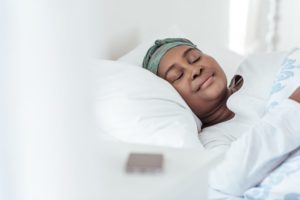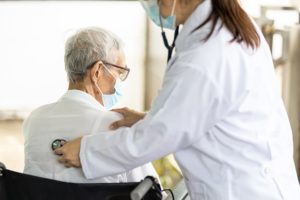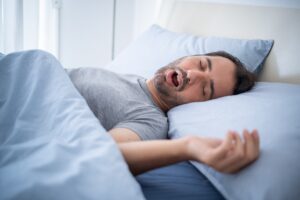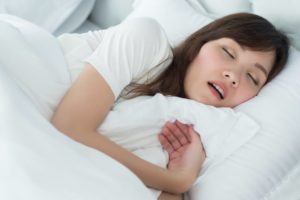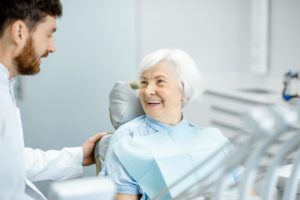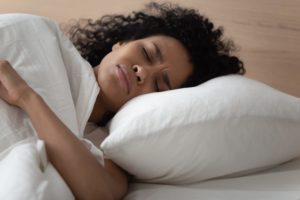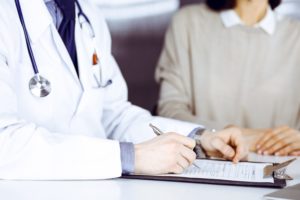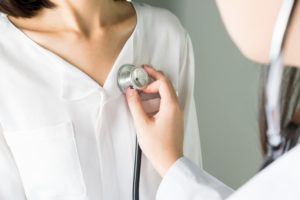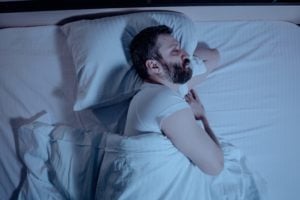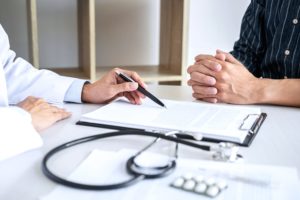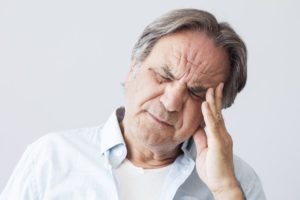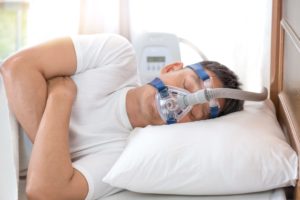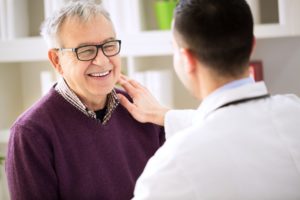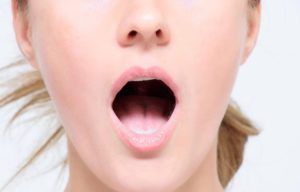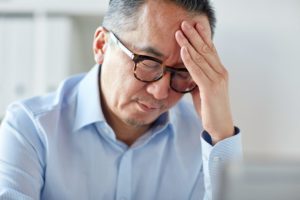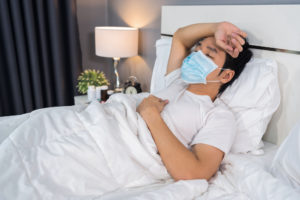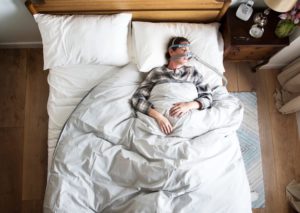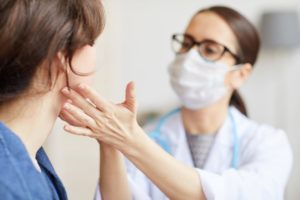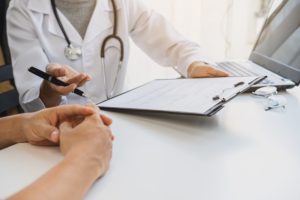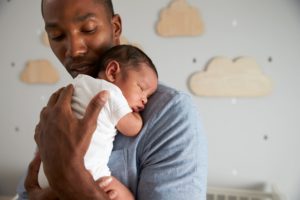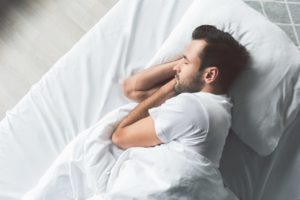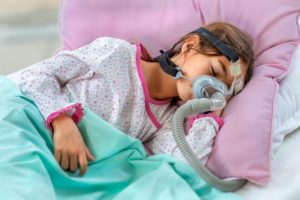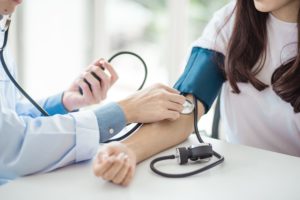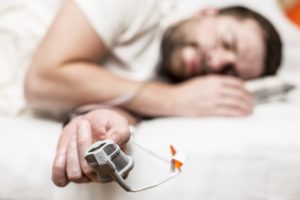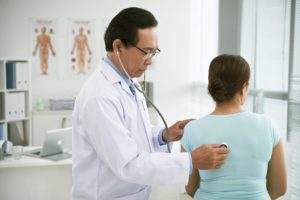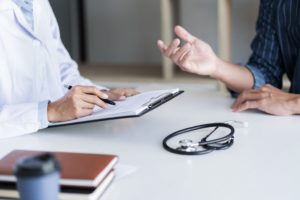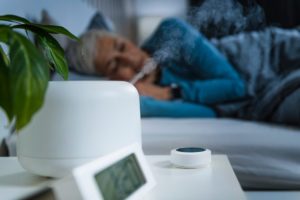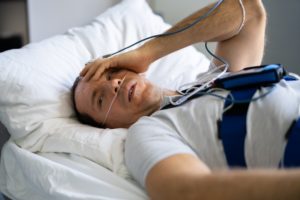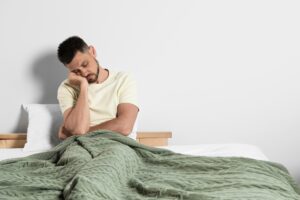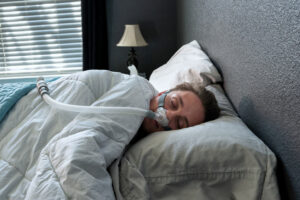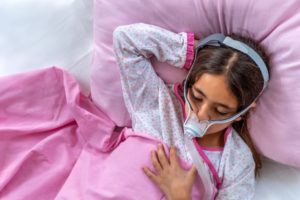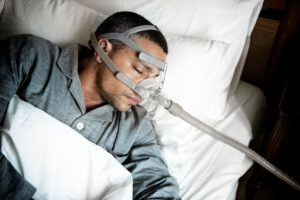When you buy through our links, we may earn a commission. Products or services may be offered by an affiliated entity. Learn more.
Sleep Apnea Symptoms in Women
Anywhere from 10% to 15% of U.S. females have obstructive sleep apnea (OSA), a sleep disorder characterized by breathing that repeatedly slows or stops during sleep. While snoring and daytime sleepiness are common symptoms of sleep apnea, women with OSA may present with morning headaches, mood changes, or insomnia.
Knowing how the symptoms of sleep apnea present in women is important for getting a proper diagnosis and treatment. We discuss risk factors, common obstructive sleep apnea symptoms in women, and how sleep apnea can affect long-term health.
Symptoms of Sleep Apnea in Women
Common symptoms of obstructive sleep apnea in women include insomnia, morning headaches, and altered mood. Other symptoms may include snoring, restless legs and urinating more frequently at night.
Since much of the research on OSA has been performed on males, researchers are still learning how sleep apnea presents in women and those assigned female at birth. For this reason, it is important to talk with a doctor about any symptoms that may be sleep-related.
Nighttime Awakenings and Insomnia
Breathing issues from OSA may wake a person up repeatedly during the night and cause symptoms of insomnia, or trouble getting back to sleep. Experts believe this insomnia is related to a physical stress response caused by disrupted breathing .
Having insomnia along with obstructive sleep apnea is linked to a worse quality of life, depression symptoms, and a higher risk of heart disease.
Morning Headaches
OSA can cause morning headaches as a result of reduced oxygen levels during sleep. Typically these are tension-type headaches, which feature a constant pain in the face, or around the head or neck.
Mood Symptoms
Obstructive sleep apnea and its disruption to sleep can worsen feelings of anxiety and depression. People with OSA may also have trouble remembering things and feel more irritability during the day, unable to stay focused and engaged.
Snoring
Snoring is considered a hallmark sleep apnea symptom, as it tends to represent a partially blocked airway. While OSA with snoring is more commonly reported in men, women who snore, particularly during periods such as pregnancy or menopause, are more likely to develop OSA. Other audible symptoms of sleep apnea include gasping and choking during sleep.
Think You May Have Sleep Apnea? Try an At-Home Test

our partner at sleepdoctor.com
Save 54% on Your Sleep Test Today
Shop Now“Truly grateful for this home sleep test. Fair pricing and improved my sleep!”
Dawn G. – Verified Tester
Daytime Tiredness
People with OSA have multiple mini-awakenings throughout the night, which can lead to poor-quality sleep and daytime tiredness. OSA may also cause excessive sleepiness throughout the day, especially during monotonous activities like sitting in a meeting.
Frequent Nighttime Urination
When OSA wakes a person up at night, they may need to urinate. If they aren’t aware they have OSA, waking up to urinate may seem like the primary problem.
Restless Legs
Although restless legs syndrome is a distinct disorder, women with OSA have been found to report restless legs. Restless legs symptoms involve an unpleasant sensation accompanied by a strong urge to move one’s legs. These symptoms may be even more common during times of hormonal changes , like puberty, pregnancy, and menopause.
Risk Factors for Obstructive Sleep Apnea in Women
Because hormones like estrogen and progesterone seem to protect against obstructive sleep apnea, people may be more likely to experience symptoms during pregnancy, menopause, or certain times of the menstrual cycle. Those with polycystic ovarian syndrome (PCOS) may also be at a higher risk for obstructive sleep apnea.
- Menopause: Estrogen levels drop in menopause, more than doubling the risk of developing obstructive sleep apnea. Hormone replacement therapy may reduce OSA symptoms, but studies of this treatment have produced conflicting results.
- Polycystic ovary syndrome: Polycystic ovary syndrome (PCOS) is marked by high levels of certain hormones, like testosterone, in people assigned female at birth. Sleep apnea commonly coexists with PCOS, which may be due to lower levels of certain hormones, like estrogen, that may protect against OSA.
- Pregnancy: A person’s OSA risk appears to increase during pregnancy. Some research has found up to 27% of pregnant people develop OSA, although results vary widely. Some studies suggest the risk of OSA increases as a pregnancy goes on, perhaps because of hormonal or physical changes. It may resolve after the baby is born.
- Menstrual cycle: As hormone levels fluctuate throughout the menstrual cycle, OSA symptoms may become more severe in certain phases. For example, OSA symptoms may increase during menstruation and for days after, until ovulation. Then symptoms may become less severe after ovulation, until the next menstruation period begins.
Some risk factors for OSA are universal regardless of sex or gender. Overweight and obesity are considered the strongest risk factors for OSA, particularly when accompanied by a larger neck circumference. Researchers consider that for women and people assigned female at birth, a neck circumference of 16 inches or greater raises the risk of obstructive sleep apnea. Obesity may be a particularly important OSA risk factor after menopause.
For all people, consuming alcohol and sedatives before bed can exacerbate sleep apnea symptoms. A blocked or stuffy nose from allergies or viral infections may also increase OSA symptoms. OSA appears to run in families, likely as a result of both genetics and shared lifestyle factors. Other OSA risk factors include physical differences in the jaw or upper airway, such as large tonsils.
How Untreated Sleep Apnea Impacts Women’s Health
Untreated sleep apnea can contribute to high blood pressure, type 2 diabetes, and heart disease. In addition, OSA may contribute directly to physical changes in the heart.
During pregnancy, OSA is linked to high blood pressure and pregnancy-related diabetes. Pregnant people with obstructive sleep apnea may be more likely to give birth early, require a cesarean section, or have a baby with low birth weight.
Poor sleep from OSA may cause daytime tiredness that raises the risk of car crashes. On a long-term basis, untreated OSA may also contribute to cognitive impairment and dementia in women.
Sleep Apnea in Transgender Women
There is little research on sleep apnea in transgender women. Some studies suggest that gender-affirming hormone therapy involving estrogen may lessen OSA symptoms .
However, other factors may also continue to play a role. Sex-related biological or genetic differences can affect breathing pauses during sleep. Certain risk factors, such as the shape of the airway, may depend primarily on a person’s assigned sex at birth, and be unaffected by gender-affirming treatment .
Researchers hope that future studies will shed light on the nuances of obstructive sleep apnea across sexes and how gender-affirming care affects symptoms and risks.
Sleep Apnea in Women vs. Men
Based on studies comparing women and men, OSA is generally considered to be about twice as common in men, although this sex difference disappears once women reach menopause.
Some researchers suggest OSA is greatly underdiagnosed or misdiagnosed in women. These problems with accurate diagnosis could stem from the use of tools that are biased by gender or the way women experience or report their symptoms.
Obstructive sleep apnea can present differently in men and women due to hormones, physical differences, and differences in the way the body regulates breathing and muscle tone. Women may also report their symptoms differently and experience different risks related to OSA.
- Reported symptoms: While snoring is the most common OSA symptom regardless of gender, a large proportion of women may not report snoring. This could be because they don’t snore, they feel uncomfortable admitting to snoring, or their bed partner doesn’t mention hearing them snore. Women are more likely to report feeling depressed or having trouble sleeping, which could be why they are sometimes overlooked for OSA or misdiagnosed with depression or insomnia.
- Breathing problems: Women with OSA are less likely to have breathing problems that are caused by a complete airway blockage. Instead, they may experience partial blockages or periods of labored breathing, which also disrupt sleep and cause daytime symptoms. Research also suggests that breathing pauses lasting longer than 30 seconds have a more severe effect in women than in men.
- Symptoms across sleep stages: Women are more likely to have OSA symptoms during rapid eye movement (REM) sleep, a stage of sleep often characterized by dreaming. Breathing pauses that occur during REM sleep are thought to have a more severe effect on heart health, and possibly also on blood sugar levels.
- Symptoms by sleep position: In males, OSA frequently causes more severe symptoms when back sleeping. By contrast, sleeping position does not appear to significantly affect sleep apnea symptoms in females. Experts believe the female body is more able to adjust and keep the airway open in different positions.
- Effects of weight gain: Obesity raises the risk of OSA by 50% for males, but only 20% to 30% for females. Men and those assigned male at birth are more likely to accumulate fat in the neck and upper body, whereas women and those assigned female at birth usually carry fat lower in the body, where it doesn’t affect the airway.
- Physical differences: Anatomical differences between sexes may impact OSA symptoms. For example, research suggests that having a longer jaw may protect against OSA in men and those assigned male at birth. Similarly, certain facial structures common in women and those assigned female at birth may lead to partial, rather than complete, airway blockages.
When to Talk to Your Doctor About Sleep Apnea
Snoring and daytime sleepiness are thought to be the hallmark symptoms of OSA. However, women may be more likely to experience trouble sleeping, morning headaches, and feelings of depression.
Talk to your doctor if you have symptoms of obstructive sleep apnea, or if you believe you are at risk for OSA. A doctor can review your medical and sleep history and talk with you about a plan for diagnosing and treating your symptoms.
If you don’t have a doctor, Midi Health is a virtual care clinic focused on women navigating perimenopause and menopause. Along with helping you navigate sleep issues, Midi’s trained clinicians provide patients with personalized care for hot flashes and night sweats, moodiness, anxiety, brain fog, weight gain, and many more symptoms of hormonal change. Treatments may include hormonal and non-hormonal medications, supplements, and lifestyle coaching and Midi’s care is guided by world-class experts in women’s midlife health.
References
9 Sources
-
Martin, J. L., Carlson, G., Kelly, M., Fung, C. H., Song, Y., Mitchell, M. N., Zeidler, M. R., Josephson, K. R., Badr, M. S., Zhu, R., Alessi, C. A., Washington, D. L., & Yano, E. M. (2021). Sleep apnea in women veterans: Results of a national survey of VA health care users. Journal of Clinical Sleep Medicine, 17(3), 555–565.
https://pubmed.ncbi.nlm.nih.gov/33124975/ -
Subramanian, S., Guntupalli, B., Murugan, T., Bopparaju, S., Chanamolu, S., Casturi, L., & Surani, S. (2011). Gender and ethnic differences in prevalence of self-reported insomnia among patients with obstructive sleep apnea. Sleep & Breathing, 15(4), 711–715.
https://pubmed.ncbi.nlm.nih.gov/20953842/ -
Mallampalli, M. P., & Carter, C. L. (2014). Exploring sex and gender differences in sleep health: a Society for Women’s Health Research Report. Journal of women’s health (2002), 23(7), 553–562.
https://pubmed.ncbi.nlm.nih.gov/24956068/ -
Louis, J., & Piem, G. W. (2023, March 1). Obstructive sleep apnea in pregnancy. In V. Berghalla, & N. Collop (Eds.). UpToDate., Retrieved April 28, 2023, from
https://www.uptodate.com/contents/obstructive-sleep-apnea-in-pregnancy -
Kline, L. R. (2023, January 13). Clinical presentation and diagnosis of obstructive sleep apnea in adults. In N. Collop (Ed.). UpToDate.
https://www.uptodate.com/contents/clinical-presentation-and-diagnosis-of-obstructive-sleep-apnea-in-adults -
Robertson, B. D., Lerner, B. S., Collen, J. F., & Smith, P. R. (2019). The effects of transgender hormone therapy on sleep and breathing: A case series. Journal of Clinical Sleep Medicine 15(10), 1529–1533.
https://pubmed.ncbi.nlm.nih.gov/31596219/ -
Earl, D. C., & Brown, L. K. (2019). On not knowing what we don’t know to knowing what we don’t know: Obstructive sleep apnea in the transgender community. Journal of Clinical Sleep Medicine, 15(10), 1393–1395.
https://pubmed.ncbi.nlm.nih.gov/31596202/ -
Wimms, A., Woehrle, H., Ketheeswaran, S., Ramanan, D., & Armitstead, J. (2016). Obstructive Sleep Apnea in Women: Specific Issues and Interventions. BioMed research international, 2016, 1764837.
https://pubmed.ncbi.nlm.nih.gov/27699167/ -
Sankar, V., & Zapanta, P. E. (2021, March 9). Physiologic approach in snoring and obstructive sleep apnea. Medscape., Retrieved April 28, 2023, from
https://emedicine.medscape.com/article/869941-overview#showall





